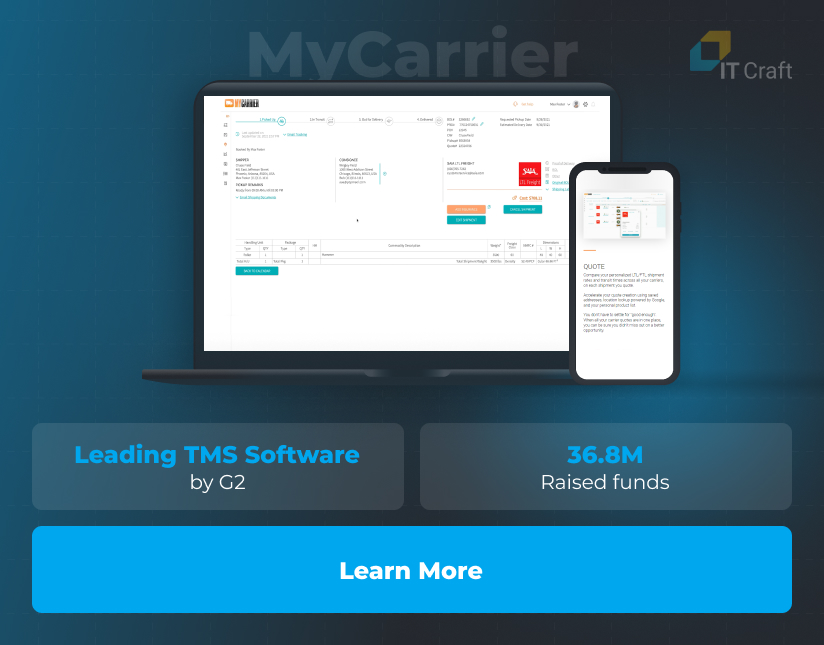Outsourcing software development services is one of the key elements in the growth and optimization strategy for organizations of all sizes and complexity.
With its help, businesses can efficiently close the gaps in missing expertise instead of creating extra pressure on in-house departments.
By contracting a reputable provider, organizations lift off the burdens of hiring, managing, and retaining required engineering talents.

This guide to outsourcing software development is here to help you compose a bigger picture of how outsourcing can — and will — increase your bottom line in 2024.
Read below about trends, opportunities, risks, myths, and points to consider.
1
What Is Software Development Outsourcing?
Software development outsourcing refers to shifting all or certain activities on a digital project to a third-party vendor that takes responsibility for its successful execution.

Outsourcing software development companies often provide flexible services that adjust to specific client needs, a crucial point for a quick implementation at a competitive price.
They can:
- assemble a dedicated team that works autonomously,
- assign narrow-focused experts and integrate them into the client’s team,
- consult on project roadmap and long-term technical decisions,
- migrate and optimize digital infrastructure,
- design and implement a plan for a company’s digital transformation,
When Does a Company Need to Outsource Software Development?
IT services is a growing trend. According to Gartner’s forecast on worldwide IT spending, IT services will surpass other expenditures and is expected to reach $1.5T. Here is why.
Outsourcing software development – being an essential part of IT services – lets organizations develop and expand high-quality software efficiently while adding and scaling resources quickly. It can be a good option for both tech and non-tech companies, which enables them:
- mitigate risks,
- improve operations,
- effectively distribute limited resources,
- accelerate changes,
- and more.
Outsourcing software development can make more sense than trying to tackle the growing pile of problems internally in the following situations:
- Big plans but limited resources
Businesses operate under limited budgets and tight timelines while neither an in-house development team nor established development processes are available.
An organization expects an uneven workload distribution when the scope of work drops dramatically after a certain milestone.
- Skill shortage in the local market
Hiring in-house engineers takes longer and more expensive than planned initially; retention becomes complex.
- An overwhelmed in-house team
In-house developers face an increasing workload while dealing with low-added-value tasks and activities that are out of their specialization.
The company lacks expertise in cutting-edge technologies that it needs to introduce to implement new ideas and features.
Software development distracts the organization from its core business challenges and slows its improvement pace.

2
Navigating Outsourcing Software Development Opportunities
As part of a company’s global strategy, outsourcing software development requires careful evaluation of available options and provided cooperation terms.
An organization needs to decide which of the following can provide the best value:
Types of Outsourcing
Companies can select full or partial outsourcing.
- Full outsourcing software development occurs when a vendor works on all tech activities on the project. It is best for companies that do not have an internal development team, e.g., startups, small to medium online stores, clinics, etc.
- Partial outsourcing means shifting only some activities for which the company lacks expertise or capabilities. Companies outsource software development partially to support an in-house team’s operations and diversify risks.
Outsourcing Software Development Models
A vendor can offer an organization one of the following options, depending on the nature and scope of work, which requires outsourcing:
The vendor assembles a project team containing all required skills and expertise. It also assigns a dedicated project manager to serve as a contact point between the team and the client and coordinate efforts.
The team works remotely and autonomously on the entire project or its significant part, e.g., mobile app(s), API, Quality Assurance, etc.
The vendor assigns one or several engineers whom the client interviews and approves. They work directly with the client team and report to the project manager, while the vendor is responsible for HR processes.
Usually, they add essential expertise to the project, e.g., DevOps, QA, knowledge of specific frameworks, and more.
-

You can save up to 50% of IT budget through staff augmentationYou can quickly make missing experts a part of your team for the time you need with the help of
IT staff augmentation services.
A dedicated engineer or a team works on uninterrupted software operations 24/7/365.
The vendor and the client make a service-level agreement (SLA) that clearly and transparently determines the minimum scope and quality of provided services.
Managed services work for system administration and maintenance.
Services That Can Be Outsourced
Outsourcing software development vendors offer various activities, helping with challenges at different software lifecycle stages. Those can include:
- Full-cycle software development
- Web/mobile app development
- AI development
- UI/UX design
- Project rescue
- Software modernization
- QA and testing
- Software consulting
- DevOps and administration services
Vendors’ Specialization
Every outsourcing vendor has strong points. These can be expertise-based specialization, focus on certain technologies, or acquired experience in products for a specific industry or niche.
Service specialization
Vendors can offer services for specific client goals and challenges. They can focus on software development for startups, cybersecurity, digital transformation, staff augmentation services, and more.
Technological focus
Outsourcing software development services providers can specialize in certain tech domains. For instance, IT Craft offers full-cycle web and mobile development, including DevOps and system administration.
Industry expertise
To best serve their clients, some vendors choose to serve certain industries and niches where they can meet emerging tech challenges efficiently, such as logistics, healthcare, VR and AR, ecommerce, fintech, and others.
Unique approach to each client’s business challenges
For successful cooperation, IT Craft developers start by identifying services and activities that best meet your business needs.
Contact us
Vendors’ Location Relative to Clients
Outsourcing software development is a global market in which organizations can search multiple locations for a vendor that meets their specific limitations.
Organizations can choose between:
- Onshoring – finding a team within the same country.
- Nearshoring – hiring a team in a neighboring country and within the same or close time zone.
- Offshoring – contracting a team overseas working from a distant time zone.
Where do you find developers?
The recognized top destinations for outsourcing software development include:

3
Benefits and Risks of Outsourcing Software Development
Before a vendor search starts, risks and benefits need a careful assessment to ensure the latter outweigh the former.
An organization needs to identify the goals of outsourcing and the factors that could affect productivity.
Here is what an organization can get and what it should avoid when outsourcing software development:
Benefits of Outsourcing Software Development Missing expertise
Legacy and niche stacks can be unpopular among local engineers because they do not promote careers. On the other, they still help the company make a profit without requiring major rework.
Outsourcing lets the organization find expert engineers unavailable for in-house hiring at an affordable price, closing the workflow gaps.
The vendor can also help with tech migration and software transition if the tech stack loses relevance.
When an organization hires a dedicated team, it does not need to worry about development workflow, role distribution, or coordination between individual team members. The vendor is responsible for the team’s establishment and HR processes.
Moreover, software development experts positively affect the client’s internal processes. They help identify activities that bring great business value for the least effort and work on their implementation.
Organizations can save costs directly by paying lower hourly rates to engineers residing in cost-efficient destinations. They can also indirectly save on overhead and hiring costs, software licenses, office rent, and more.
More importantly, an established, expert team is one step ahead of its non-flexible competitors, providing improvements quickly and efficiently. It retains high productivity in the long term, reducing the working hours needed to deliver projects.
A dependable vendor maintains transparency with its clients, providing detailed plans and reports on completed works. It also alerts people in time to risks and emerging challenges that can affect the costs of provided services.
The vendor is responsible for its employee management, thus creating a minimum load on the client’s departments working on accounting, payroll, contract management, etc.
There are two key features of team flexibility.
First, a good development team focuses on business goals. It helps the organization respond quickly to market challenges by adding new features, removing unused ones, automating workflow, introducing new resource-saving techniques, and more.
Second, the outsourcing team can be a great addition to the in-house team, balancing the fluctuating project scope. This lets organizations save in-house developers from stress and burnout caused by excessive workload.
Risks of Software Development Outsourcing
The biggest lessons learned from unsuccessful outsourcing software development lie in vendor selection and strategic planning. Organizations say these are the two top things they want to do differently.
They correlate to the following risks:
It is never enough to stress that careful vendor selection is critical for project success. A bad choice can result in delayed deliveries, budget overruns, and irreparable damages to the client’s business.
The problems with a dishonest vendor include inexperienced but expensive engineers, hidden development costs, an unresponsive project manager and the team, and more.
Solution: Invest sufficient time into vendor search and selection; start with a small pilot task to test drive the team and replace it immediately if doubts emerge.
An engineering team can lose its pace in the long run, and extra efforts can be required to get it back on track. It is crucial to identify the hidden roots of the visible problems.
For instance, the team can be overwhelmed with the project backlog and have no time for tech debt management. As a result, maintenance and feature deliveries become difficult.
Solution: Research the real reasons for productivity/quality drop. Introduce required changes in workflow. Also, consider IT staff augmentation.
Also, the vendor can lose the balance for various reasons, such as changes in management, unsuccessful infrastructure transition, deteriorating working environment, growth challenges, and more.
These factors can cause short- and long-term consequences, such as churn among vendor employees, productivity drop, or even loss of certain competencies, affecting clients’ projects directly.
Solution: Depending on the issue’s severity, you can either help the vendor find a solution that will work for you. Or you could start the project transitioning to a different vendor.
- Lost control over processes
The client should maintain internal competencies in how the system corresponds to real business processes.
The vendor must produce well-commented code and regularly update project documentation to retain the knowledge of how the software works.
Failing to do so results in the inability to identify and introduce new, value-generating features and, in the long term, in losing a competitive edge.
Also, the client faces growing vendor dependency, which can lead to unfavorable contract terms or immense challenges if the vendor suddenly loses stability.
Solution: Maintain records of project plans and reports to detect challenges early. Keep control and access of source code and documentation for possible fast project transition.
- Internal resistance to changes
Client employees can be unprepared that the organization has outsourced software development and might not appreciate related changes. They can even start sabotaging the new team, eventually leading to a slowdown.
Solution: Transparent communication is critical. It is essential that the in-house team understands the reasons for introducing another team and sees positive changes, such as decreased pressure and workload.
Again, careful vendor selection is important because it is key to ensuring both the in-house and external teams share the same vision and working ethics, eliminating possible friction.
4
Trends in Outsourcing Software Development
According to Deloitte’s 2024 Technology Industry Outlook, the technology industry feels optimistic, expecting modest growth, and has even more robust expectations for the next 2025 year.

The following trends are essential for mitigating ongoing risks, increasing efficiency, and improving the pace of digital transformation:
AI
AI services, especially those based on generative AI, are in the constant focus of startups, investors, and enterprises. Software companies and service providers plan to incorporate AI into their systems for at least some offerings.
In its TMT predictions, Deloitte forecasts that enterprises will grow their AI spending by 30%, ramping up in the second half of 2024.
Enterprises will work on developing and training custom AI models based on internal data sets. They enable companies to improve productivity, decrease costs, and receive various business insights — with industry experts’ help.
Cybersecurity
Cybersecurity is the next-top technological concern after AI. The key reasons for investments in cybersecurity include:
- a growing popularity of remote work
- continuous cloud adoption
- new attack surfaces that emerge with rapid AI adoption
- evolving data protection and privacy regulations
- due to constantly increasing threats
- skyrocketing costs of a single cyberattack
The growing complexity of applied systems, on one hand, and a scarcity of available cybersecurity specialists on the other, make vendors’ services in security audits and enhancements a valuable option for many businesses.
Cloud
The shift from on-premises software to cloud-based SaaS solutions continues, enabling organizations to meet complex business requirements and grow user demand cost-effectively.
Complexity increases. Some companies can shift to multi or hybrid cloud to increase flexibility and optimization. Also, companies will only use private clouds to achieve maximum security.
Companies need help from DevOps experts to apply leading practices to software development and maintenance that let project teams modernize legacy architecture, boost digital transformations, and manage the growing complexity efficiently.
Balance between globalization and self-reliance
Supply chain resilience and diversification come to the foreground. Organizations need to focus on a strategy that increases the redundancy of their processes and available talent pool, ensuring sustainable operations in uncertain conditions.
Businesses need to incorporate outsourcing into their processes in a way that lets them take the best benefits, such as lower labor costs, wide talent pool, and flexibility, while mitigating possible risks of losing control over processes or facing security issues.
Careful evaluation of an outsourcing software development vendor, its processes, and stability is essential.
Regulations
Organizations face evolving regulations on user data storage and processing, which can create excessive operational complexity for international businesses. Violations of data jurisdictions can lead to severe fines and penalties.
Here, companies might need help with a comprehensive data audit that helps them determine and implement a diversified data residency strategy.
More importantly, they need to incorporate technical considerations into the strategy to operate under different legislations without limiting scalability or increasing system complexity and related operational costs.
5
Myths about Outsourcing Software Development
- Myth: Outsourcing results in low-quality source code
The quality of source code provided by outsourcing vendors makes its maintenance difficult and blocks system expansion in the future. A domestic team may refuse to work with it.
- Reality: This is true for inexperienced, cheapest vendors who can even fail to deliver anything in the worst-case scenario. Still, a reputed provider will design a solid solution, considering long-term technical and business challenges.
Decent expertise costs money. Look for the best quality-for-the-price ratio instead of the cheapest price.
- Myth: Security concerns and risks of losing intellectual property are too high
Vendors can be unaware of security standards. Or they can neglect them to cut corners and deliver a project as soon as possible, earning extra. Also, the vendor’s employees can steal source code and sell it to the client’s competitors.
- Reality: The remote nature of outsourcing software development creates concerns. However, a dependable vendor signs an NDA before anything starts. It applies industry standards and best practices to mitigate possible risks.
Initiate a security audit and make the vendor adopt your security policies to eliminate concerns.
- Myth: Time-zone differences can slow down the project pace
Communication is difficult between different time zones. It does not facilitate the flow of ideas and can even block efficient project implementation while each party waits long for the other party’s response.
- Reality: Outsourcing vendors successfully deliver software and change priorities flexibly. Regular video meetings ensure constant synchronization between the client and the team.
Discuss with the team ahead of the project kickoff your expectations, communication means, and frequency of meetings.
- Myth: An outsourcing development team requires constant micromanagement
Due to high cultural barriers, the client will need to spend much of their valuable time explaining basic things to developers. The client will also need to recheck the results and ask for improvements multiple times until the work is complete.
- Reality: This is quite possible with the cheapest developers in the market. However, reputed vendors have a high working ethic and a proactive attitude toward client projects to ensure efficient task completion.
Evaluate developers’ attitudes and soft skills before kicking off a project. Or, better, start with a pilot task.
6
Key Points to Consider for Successful Software Development Outsourcing
Choosing a specific provider can be a challenging task for businesses with limited experience in outsourcing software development. You need to find the best vendor for your particular challenges and limitations.
Here are important points to help you structure the search and evaluation of a future vendor:
Understand Project Needs and Challenges
Know what you want and how much you can afford to spend on it.
Formulate a vision of what value outsourcing software development should bring you and how much money is available for implementation.
It lets you define realistic expectations from the project team. In its turn, the team will know what it needs to do to increase your bottom line.
Use Non-Default Filters
Leading catalogs, such as Clutch, Upwork, or Goodfirms, offer an immense pool of vendors and services for almost any need.
However, problems with relevance emerge quickly. Because platforms are available at no cost, they prioritize sponsored and advertised profiles, creating an unnecessary distraction.
Try different filtering combinations and read reviews carefully to ensure you shortlist relevant companies.
Consider Vendor’s Size and Specialization
Large companies can be great in terms of scaling and specialization but be marginally interested in projects below minimum budget or complexity criteria.
Small agencies can provide the best expertise in a specific niche. However, they can be limited in flexibility or struggle with projects out of their expertise.
Consider mid-sized companies that know your niche, can add sufficient resources as per your needs, and are interested in your project.
Evaluate Carefully
Ask sales managers for references or experiences similar to your project. Discuss their solutions to specific clients’ problems to ensure they know what to do with yours.
Schedule a call with the project manager and listen carefully to their explanation of estimates, team composition, steps, and actions. Clarify project details before cooperation starts and sign a detailed contract to evade hidden costs.
Also, take time to understand your dedicated project manager and their responsiveness. Project pace depends critically on the project manager’s involvement in processes.
Invest in Agile Workflow
It makes sense to start cooperation with fixed-price tasks, evaluating the team’s capability to meet their given estimates.
However, when the team meets the process expectations, switching to time-and-material cooperation is wise, allowing for increased flexibility.
Time-and-material cooperation improves the team’s agility. They can make enhancements that will pay off in the long term without fear of overspending a Sprint budget.
Increase your pace with IT Craft
Our engineers use different Agile approaches to ensure quick and flexible deliveries
Let’s discuss
7
Why Do Organizations Outsource Software Development to IT Craft?
For over 20 years in outsourcing software development, IT Craft engineers have been doing their best day by day to deliver, expand, improve, and keep client projects up and running.
We are here to help you with a tech solution best suited to your needs and limits.
First, we listen to your vision and specific concerns.
Then, we come up with a plan that reflects your unique situation. We clarify all details until complete transparency is reached.
Next, we provide a solution while keeping your changing business priorities in mind.
Omni
Virtuix startup builds engaging solutions for active VR sports and games, including treadmills and playrooms that generate repeat visitors.
The IT Craft team took over the client’s existing codebase, helping improve, finalize, and add new functionality.

MyCarrier
This cooperation started with the client’s vision of an MVP system that could seamlessly connect shippers and carriers.
IT Craft developers built a system from scratch on time, ensuring the client could win the first users.
The service has grown in popularity tremendously, requiring a transformation that lets the team successfully cope with the constantly increasing user load.

!
In Conclusion
Outsourcing software development can be a finely tuned secret weapon for market conquest.
Although it might look like a risky option for those with minimum expertise in outsourcing and development, it is often the best option.
Outsourcing software development vendors have wide pools of talented engineers and managers. Those take well-considered action and strive to deliver source code that solves each client’s business needs.
Be sure to follow the best practices and select a vendor who can help you.











